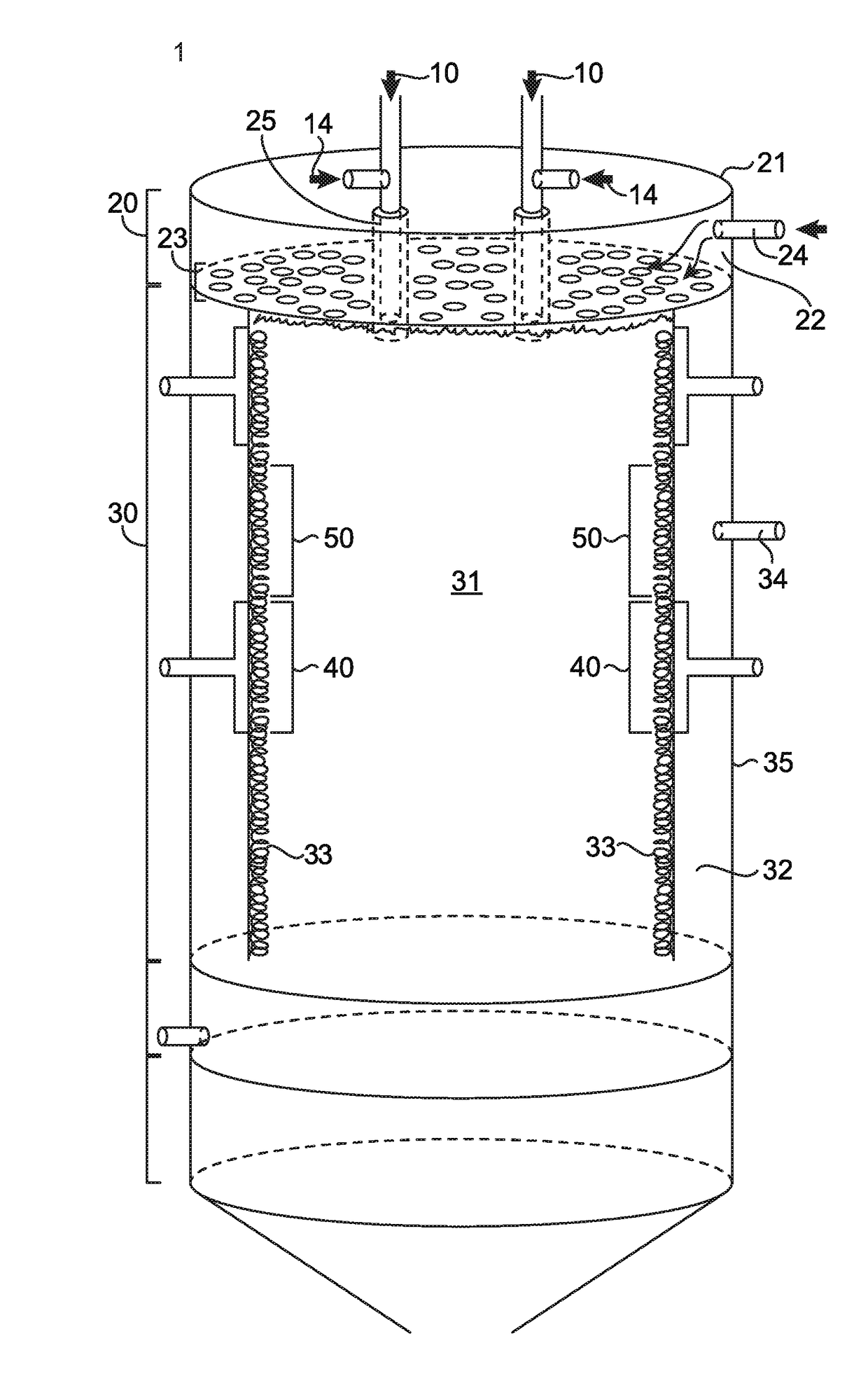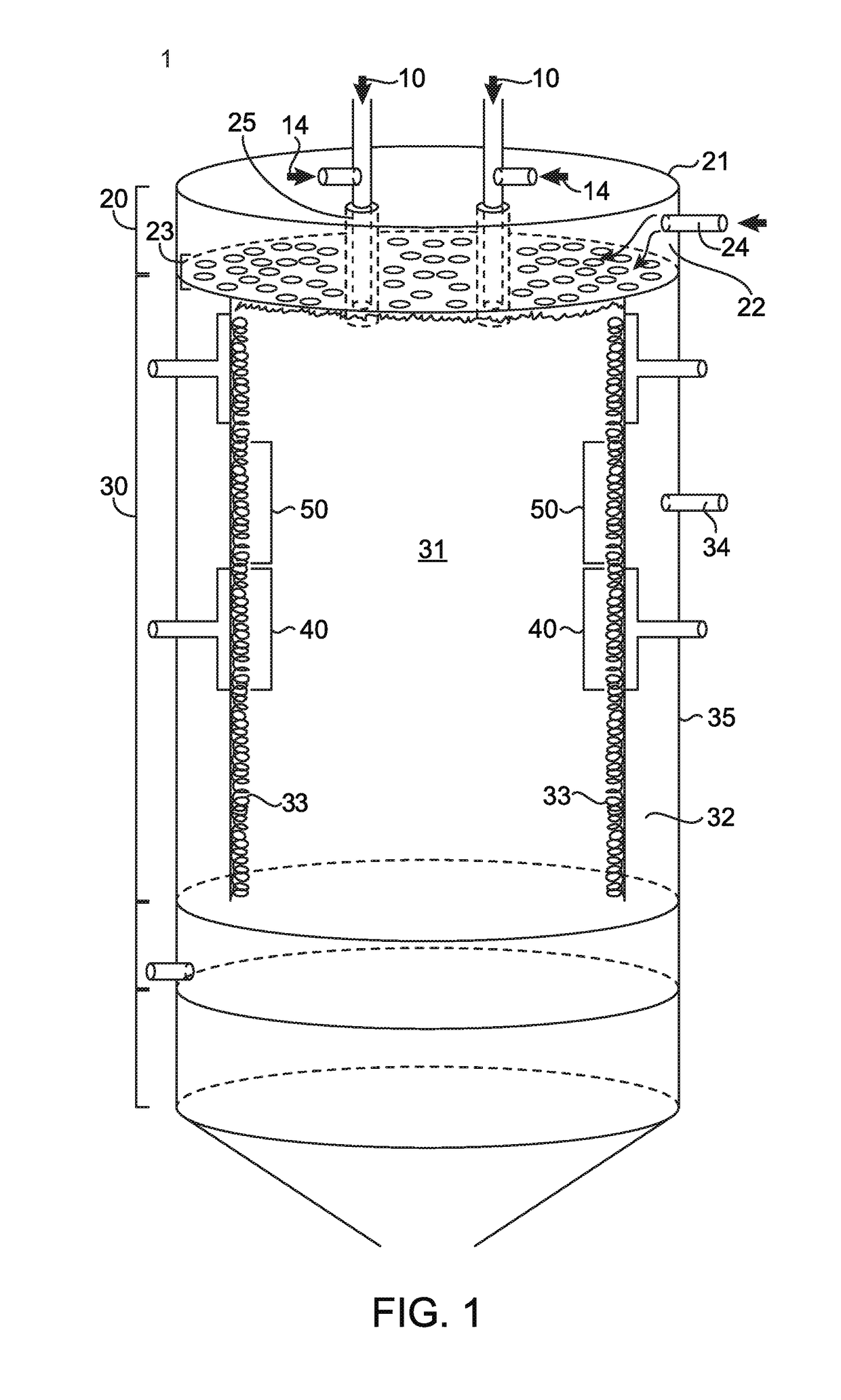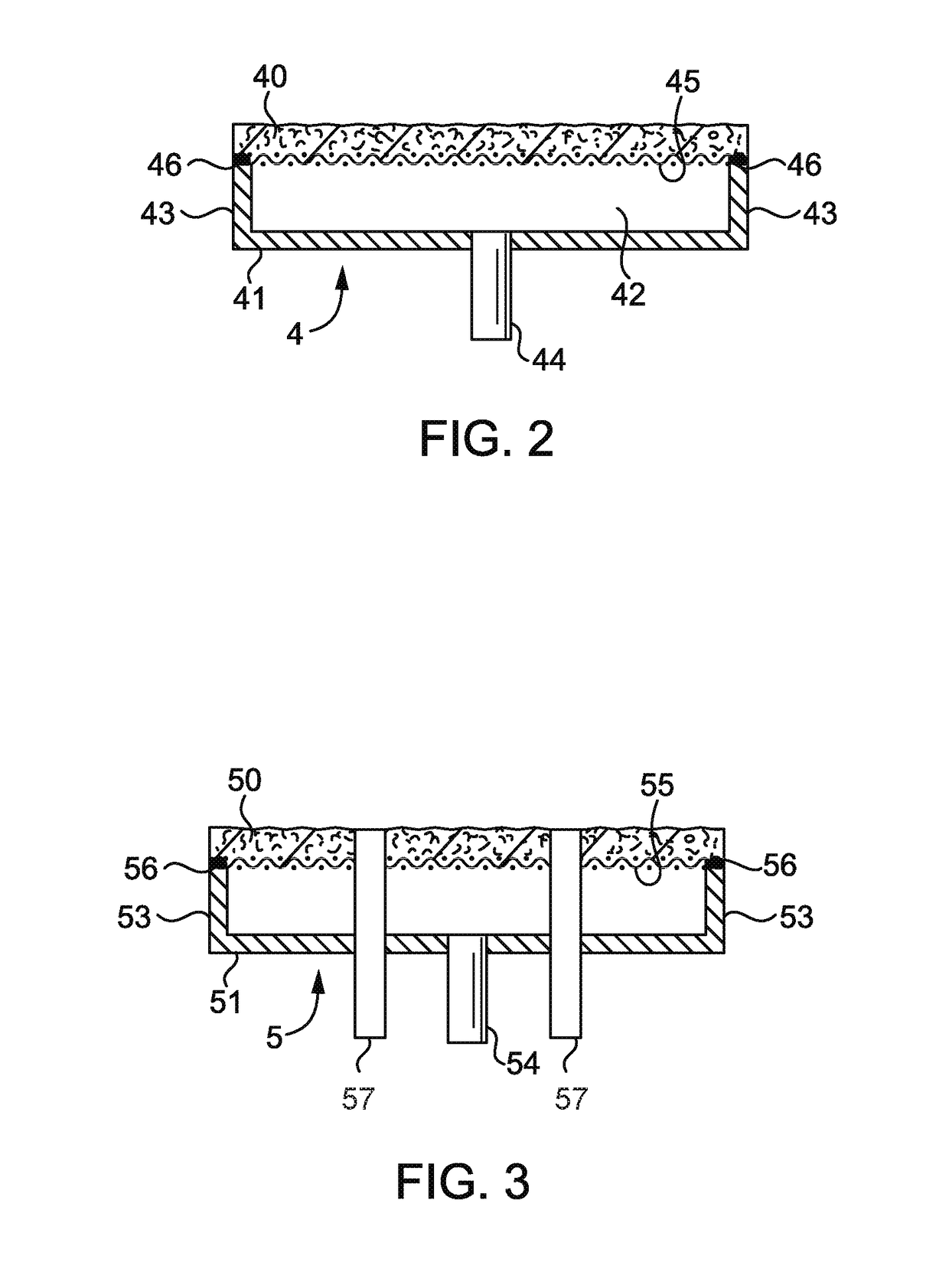Systems and methods for improved waste gas abatement
a waste gas and combustive technology, applied in the direction of combustion types, separation processes, gaseous mixture working up, etc., can solve the problems of waste gas passing through the system untreated, the performance of the abatement system is limited, and the system is not suitable for waste gas treatment, so as to reduce the accumulation of deposition products
- Summary
- Abstract
- Description
- Claims
- Application Information
AI Technical Summary
Benefits of technology
Problems solved by technology
Method used
Image
Examples
example 1
ild-Up on a 6×7 and 3×7 Burner with Exemplary Embodiment
[0047]To investigate resistance to solid deposition, specifically from silica or other silicon containing solids, tests were conducted in a furnace having a similar configuration to FIG. 1. Second permeable interior wall (corresponding to 33 in FIG. 1) measured 7 inches inside diameter by 6 inches tall. The first permeable interior wall (corresponding to 23 in FIG. 1) was a 7 inch disc to form the ceiling with six apertures 25 to convey waste gas into the reaction chamber 30. Each waste gas tube was supplied with gas streams containing 50 liters per minute of nitrogen. An additional 2 liters per minute of silane was supplied to one waste gas tube. Natural gas and excess air were supplied through the second permeable wall to assist in destruction of the waste gas and 50 liters per minute of clean dry air was supplied to the first permeable wall to repel silica produced in the reaction zone. After 6480 liters of silane were consu...
example 2
ild-Up on a 6×7 Burner without Exemplary Embodiment
[0048]A comparison test was done with the same reaction chamber as described in Example 1, except that the first permeable wall was replaced with a non-permeable refractory surface. After consumption of 2160 liters of silane at a flow rate of 2 liters per minute, more than 0.75 cubic inches of silica deposited on the non-permeable refractory surface and waste gas nozzle. The majority of the silica was observed as deposited at the base of the waste gas nozzle, forming a tubular structure of silica extending into the reaction zone as shown in FIG. 6. This amount of silica deposition would have a negative effect on the destruction efficiency of perfluorocarbons. From these tests, it can be asserted that the invention reduces silica build up by more than 90%.
Example 3—CF4 and NF3 Testing on 6×7 Burner with Exemplary Embodiment
[0049]Additional tests were performed to ensure that the increased resistance to solid deposition provided by th...
examples 4 and 5
6×6 Burner with Exemplary Embodiment
[0055]After successful laboratory testing, further testing was done in two field installations operating on commercial semiconductor processes. The field sites chosen were third-party operated and produced large amounts of silica. Before the testing began, these sites had installed systems comprising reaction chambers similar to the configuration described in Example 2; there was no first permeable wall present, but instead there was a non-permeable refractory surface. In this configuration, the machine operators experienced frequent service shut downs due to solid deposition inside the reaction chamber, requiring them to open the unit and remove the solids. The permeable surfaces were installed and operated over the course of six months. During this time silica deposition inside the reaction chamber decreased significantly.
[0056]In the Example 4 field site, the throughput of wafers between required services increased on average by a factor of 3.4...
PUM
 Login to View More
Login to View More Abstract
Description
Claims
Application Information
 Login to View More
Login to View More - R&D
- Intellectual Property
- Life Sciences
- Materials
- Tech Scout
- Unparalleled Data Quality
- Higher Quality Content
- 60% Fewer Hallucinations
Browse by: Latest US Patents, China's latest patents, Technical Efficacy Thesaurus, Application Domain, Technology Topic, Popular Technical Reports.
© 2025 PatSnap. All rights reserved.Legal|Privacy policy|Modern Slavery Act Transparency Statement|Sitemap|About US| Contact US: help@patsnap.com



